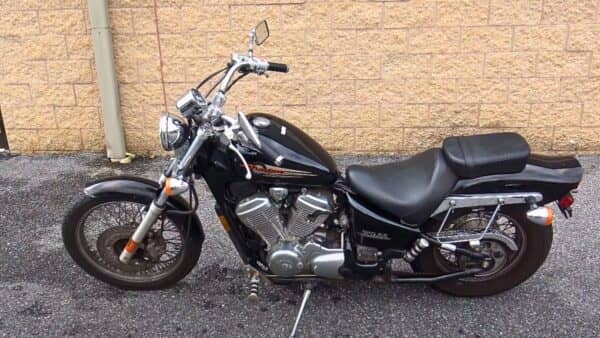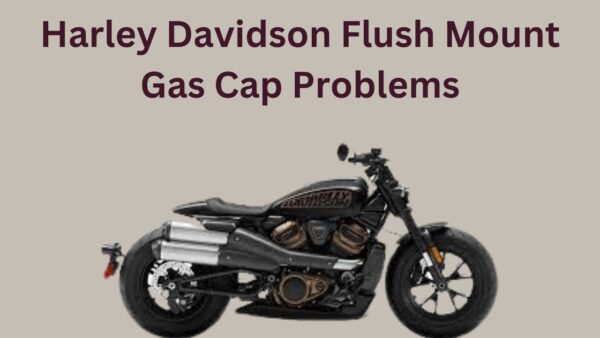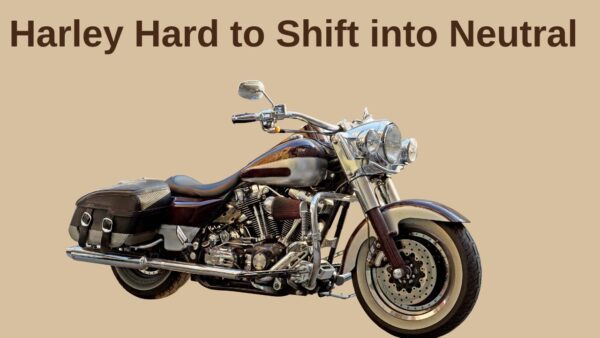The Honda Shadow 600, while known for its sleek design and reliable performance, is not without its set of challenges.

In this article, we will explore the common problems, providing you with valuable insights and possible solutions.
Whether you’re a seasoned biker or a novice just getting to grips with your machine, understanding these issues can prove instrumental in preserving the longevity of your bike.
Honda Shadow 600 Problems
Some owners have reported difficulties with the bike’s carburettor, specifically with it getting clogged, resulting in poor performance and occasional stalling.
Others have mentioned issues with the electrical system, including faulty switches and inconsistent lighting.
However, the bike’s relatively low power for its size can be a drawback for riders seeking a bit more punch.
1. Electrical Issues
One of the most common problems faced by Shadow 600 owners revolves around electrical issues.
These issues can range from simple inconveniences to daunting malfunctions, making it crucial for riders to understand them.
Firstly, you may experience problems with the starter. The bike might not start, or there could be intermittent starting issues.
This is usually due to a faulty starter solenoid, which can be diagnosed by checking for a clicking noise when the ignition key is turned.
Secondly, the headlight may occasionally fail. This problem is often linked to a faulty ignition switch, which can cause the headlight fuse to blow.
To resolve this issue, you will need to check the wiring and, if necessary, replace the ignition switch. Another common electrical issue experienced with the Shadow 600 is a faulty charging system.
If your battery seems to die frequently or the bike loses power while running, this might be the root cause.
You can diagnose this by using a multimeter to check the voltage of the battery when the bike is running; it should be around 14.5 volts.
However, the bike also experiences issues with the ignition coil, leading to weak or no spark, which causes the engine to run poorly or not at all.
This can be diagnosed by checking the spark plugs; if they are dry, it’s likely the ignition coil is failing.
2. Engine Noise
One of the most frustrating issues faced by riders is engine noise, which results in clicking, knocking, or a high-pitched whine.
This noise is often an indicator of underlying mechanical problems that should be promptly addressed.
Clicking noises may suggest a problem with the valve clearance. In this situation, a valve adjustment is usually required.
If the noise resembles a knocking sound, it might indicate that your engine’s bearings are worn out or damaged, requiring immediate replacement.
A high-pitched whine, on the other hand, can be a sign of a misaligned or worn-out belt.
To correct this, check the belt for signs of wear and replace if necessary. Also, ensure the belt is correctly aligned within its pulley system.
Remember, engine noise isn’t just a nuisance; it’s a language your motorcycle uses to communicate potential problems.
3. Stalling And Wind Turbulence
Many Shadow owners have reported stalling issues with their motorcycles, typically when the bike is idling or at low speeds.
This could be due to a variety of factors, but a common culprit is often a problem with the carburettor.
Dirt, debris, or a clogged jet can disrupt the flow of fuel, causing the engine to stall.
To resolve this issue, you will need to clean the carburettor thoroughly and ensure that the idle speed is correctly adjusted.
However, wind turbulence is another significant issue faced by riders, especially at higher speeds.
The bike’s relatively lightweight frame and cruiser stance make it more susceptible to wind buffeting, which leads to an unstable ride.
To mitigate this problem, consider investing in a quality windshield that can help deflect wind over and around.
However, adjusting your riding position, particularly when passing larger vehicles or riding in high winds, can also help to minimize the impact of wind turbulence.
4. Brake Problems
One common issue that Shadow 600 owners face is related to the braking system.
This problem often results in the form of a soft brake feel, poor brake performance, or even total brake failure.
A soft brake feel can often be traced back to air trapped in the brake lines.
This can be remedied by bleeding the brake lines using a brake bleeder or manually with a wrench and a clear tube.
Be sure to follow Honda’s specific instructions to avoid causing more serious problems.
Poor brake performance may be caused by worn brake pads or a worn brake disc. If the brake pads are worn thin, they should be replaced immediately.
Similarly, if the brake disc shows signs of wear, such as grooves or scoring, it might need replacement as well.
In the case of total brake failure, it’s advised to immediately stop riding and seek professional assistance.
This could be due to a serious issue such as a brake fluid leak or a broken brake line.
5. Valve And Idle Adjustment Problem
Among the common issues with this bike, one prominent problem is the Valve and Idle Adjustment.
Owners often find that the bike has a rough idle or a hard start, both of which can be symptoms of this issue.
The first step to solving this problem is to ensure that the bike’s valves are correctly adjusted. For this, you’ll need a set of feeler gauges.
Start by removing the valve cover and, with your bike in neutral and your rear wheel off the ground, rotate the wheel to position the piston at the top of the stroke.
When the piston is at the top, the valves should be at their lowest. Insert the appropriate feeler gauge between the valve and the rocker’s arm.
If you can’t fit the gauge in, the valve is too tight. If the gauge fits but is loose, the valve is too loose. Adjust accordingly by loosening or tightening the lock nut on the rocker’s arm.
Next, you’ll need to adjust the idle. To do this, locate the idle adjustment screw on the side of the carburettor.
With the bike running, slowly turn the screw until the idle speed is where you want it. Make sure not to set the idle too high or too low, as this can cause other problems.
6. Coolant Leaks
One of the most common problems identified by many owners is coolant leaks. A coolant leak can be potentially detrimental to your Shadow 600’s performance.
The cooling system plays a crucial role in maintaining the motorcycle’s engine temperature, preventing overheating and potential damage.
Therefore, a coolant leak isn’t something you should ignore.
If you notice a bright green, sweet-smelling liquid collecting underneath your bike, it’s a telltale sign of coolant leakage.
The source of a coolant leak can vary; it might be from the radiator, a cracked hose, a failing water pump, or even a damaged head gasket.
To address this issue, start by identifying the leak source. Once you’ve pinpointed the location, consider whether it’s a repair you can handle or if it’s best left to the professionals.
For minor leaks like a loose hose, you might simply need to tighten the connection or replace the hose.
However, for more complex issues like a faulty water pump or damaged head gasket, it’s advisable to take your bike to a reputable mechanic.
7. False Neutral And Shifting Problems
“False neutral” refers to the motorcycle seeming as though it is in neutral while it’s actually in gear, or vice versa.
This issue can be particularly troubling, as it can occur mid-ride and can lead to unexpected and abrupt changes in the bike’s performance.
Shifting issues often manifest as difficulty in changing gears; the motorcycle could resist moving from one gear to another, or it might slip out of gear unexpectedly.
This problem often stems from a worn-out clutch or gear linkage, which prevents the motorcycle from engaging and disengaging gears effectively.
To fix the issue, checking the condition of the clutch and gear linkage is paramount. If there are signs of wear or damage, replacement parts may be necessary.
Secondly, adjusting the clutch and throttle cables could help resolve shifting issues.
This process involves tightening or loosening the cables to ensure they’re at the correct tension for optimal performance.
8. Fuel Issues
The carburettor, a crucial component responsible for the mix of air and fuel, can sometimes become clogged.
This can result in subpar engine performance, poor fuel economy, and difficulty in starting the motorcycle.
To address this issue, periodically clean the carburettor. Start by removing the seat and side covers, and then disconnect the fuel lines.
The carburettor can be detached by loosening the clamps that connect it to the airbox and intake manifold.
Once removed, use a carburettor cleaner spray to clean the exterior and interior components, ensuring that all jets, orifices, and passages are free of dirt and residue.
After cleaning, reassemble the carburettor and attach it back to the motorcycle. Make sure to reconnect all the lines and hoses correctly.
Once done, start the motorcycle and let it idle for a few minutes to allow the fuel to circulate through the newly cleaned carburettor.
9. Suspension Problems
The Shadow 600, while a reliable motorcycle, has been reported by some riders to exhibit issues with its suspension system.
Specifically, riders often mention a lack of comfort during long rides and an overall stiff ride that doesn’t absorb impact as well as it could.
To address this issue, firstly, check your suspension settings. Honda Shadow factory settings might not suit everyone’s personal preference or riding style.
Altering the preload, rebound and compression settings can significantly improve your ride quality.
Secondly, consider replacing the stock springs. Upgraded springs can offer a smoother, more flexible ride.
Progressive Suspension offers a set of front fork springs and shocks for the Shadow that can vastly improve ride comfort and handling.
Lastly, regular maintenance is key. Ensuring that the forks are lubricated and the seals are in good condition can prevent many common suspension problems.
Honda Shadow 600 User Reviews:
By Ride it like a courier
“Solid commuter, head-turning cruiser. I ride 230 miles a week, rain, wind, snow or shine, roads and City.
No issues with power or build quality, I can manoeuvre it through heavy tight traffic with no problem and it polishes up amazingly compared with some of my previous selection of bikes.
Brakes could be far better, and more responsive but cruiser brakes always seem poor. Corrosion in the expected places, but treat a bike right in the right, and it will reward you.”
Source motorcyclenews.com
By steveh46
“Perfect ‘starter’ cruiser for a born-again biker. Will cruise happily at 80-90, very reliable, good fun and still turns a few heads. Just returned from a 500-mile one-day trip, no problems at all!”
Source motorcyclenews.com
You can also check the common issues with the Honda Trail 125, NC750X, NC700X, 2002 Goldwing & 2017 Africa Twin

Ahtsham Younas is a passionate blogger and content writer. He loves to ride motorcycles and learn the mechanical process behind the motorcycles.
He has been writing articles in the motorcycle industry since 2019 and has learned many things about motorbike niches.


